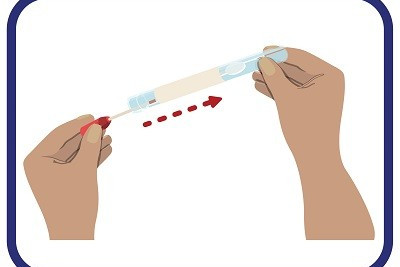General News
31 July, 2023
New self-collection process removing barriers to cervical cancer screening in the region
More people are undertaking life-saving cervical cancer screening thanks to the self-collection option introduced in Victoria last year — and the Maryborough District Health Service wants locals to know the option is available here, now. MDHS...

More people are undertaking life-saving cervical cancer screening thanks to the self-collection option introduced in Victoria last year — and the Maryborough District Health Service wants locals to know the option is available here, now.
MDHS community health nurse Nicole Power described the new testing method as a “game changer” — prior to 2022, a pap smear was the main testing method used for cervical cancer, a process performed on patients by a GP or health practitioner, and one many women and people with a cervix find uncomfortable.
From July 1 last year, a national self-collection process has allowed patients to collect their own sample.
Since the option was introduced there has been a rapid uptake of testing — 180 self-tests were taken in Victoria in June 2022, and by December that number had risen to 2413.
In 2022, 63 percent of the self-collected tests were from people who had either never screened at all, or screened less than the recommended amount of once every five years.
Self-collected tests now account for up to 12 percent of all monthly cervical screening in the state.
Cervical cancer screening rates in the Maryborough-Pyrenees region (50.3 percent according to the Australian Institute of Health and Welfare) are the lowest in Victoria, however Ms Powers said there has been a slow rise in the number of tests at local clinics, and that she hopes the self-collection option will further boost those figures.
“The self-collection method is a game changer for many women. It’s simple, quick, easy and reliable. It also helps to remove some of the barriers that we’ve seen in the past,” she said.
“The majority of our bookings at our Well Women’s Clinic are for cervical cancer screening and most women are opting for the self-test method.
“Screening data from 2021 shows only one in two women in the Maryborough and Pyrenees region were getting tested and we are hopeful the self-test will help drive improvements.
“We know there is more work to do in raising awareness in our community about the benefits of the new test and breaking down some of the myths about cervical cancer screening.”
Cervical cancer screenings are strongly recommended every five years. MDHS’ Well Women’s Clinic runs each fortnight in Maryborough, and once a month in Avoca and Dunolly to provide local access to screening for women and people with a cervix.
“The consultations and tests are free, and it’s easy to make a booking at our nurse-led clinic,” Ms Powers said.
“Self-collection is new to us all, so if you would like some support we are here to help.
“The test is usually done behind a screen or in a bathroom in a doctor’s rooms or other health setting like our Well Women’s Clinic.
“If you have a mother, sister, friend, aunty or grandmother aged between 25 and 74, we also encourage you to ask them if they are up-to-date as it could save a life.”
Self-collected tests are a simple process that can be done in private.
The patient takes their own vaginal sample using a swab which is done at the doctor’s or other health setting, and is usually done behind a screen or in the bathroom.
In some cases your doctor may be able to support you doing the test at home.
To find out more about self-testing visit your GP, or contact MDHS on 5461-0333.
Cancer Council Victoria also provides a further breakdown of the self-testing process at www.cancervic.org.au/cancer-information/screening/cervical-screening